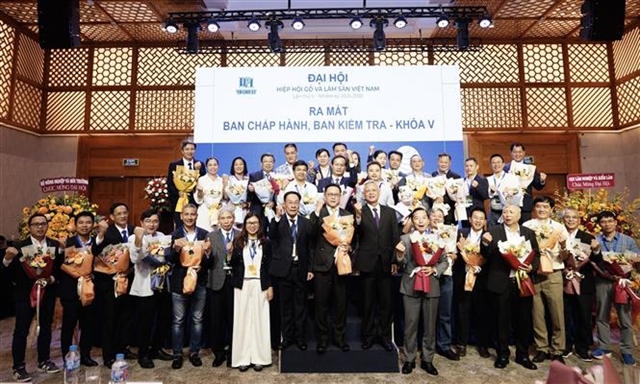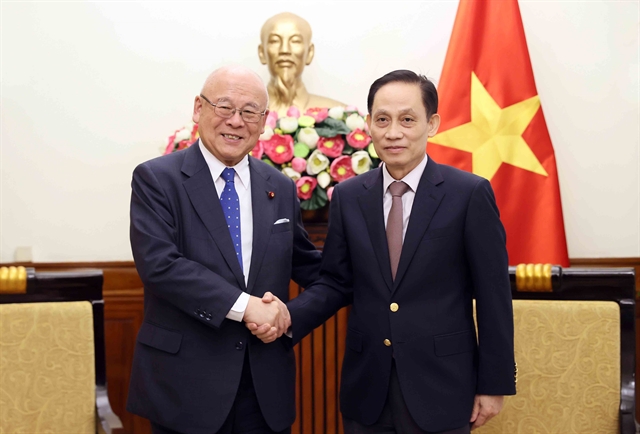 Sunday/Weekend
Sunday/Weekend
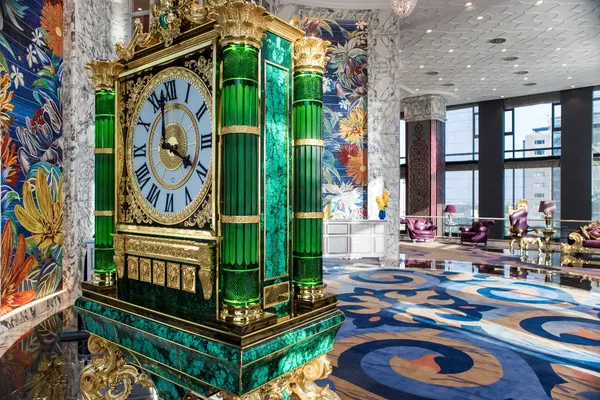
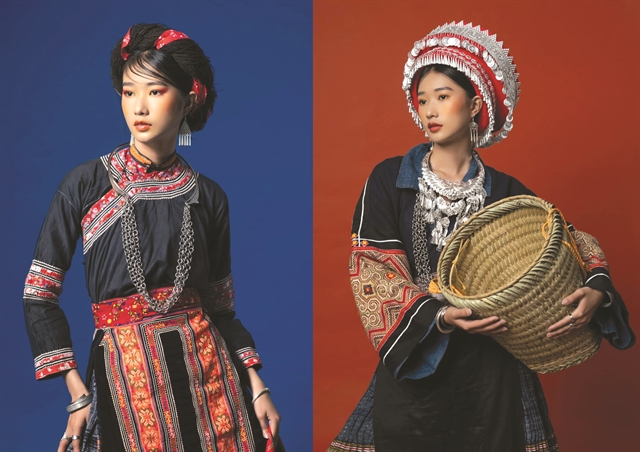 |
| Costumes of the Mông Hoa in Bắc Hà, Lào Cai, the Mông Leeg in Mù Cang Chải, Yên Bái (from left to right). Photo courtesy of Hnubflower. |
By Trần Khánh An
To highlight the authentic beauty of her ethnic Mông culture, a young woman and her collaborators have launched an eye-catching fashion project that recreates costumes worn by distinct Mông groups throughout Việt Nam.
“My inspiration to embrace traditional costumes began with my everyday interactions with the Kinh ethnic majority people embracing their attire,” said Chấu Thị Nung, 29, a Mông Hoa ethnic born in Bắc Hà District in Lào Cai Province.
After graduating from the University of Arts Education in 2016, Nung moved to HCM City to pursue a passion for fashion. Working as an áo dài (traditional long dress) designer, she was drawn to the Kinh people's movement to revive ancient costumes. But at that point, the Mông community in Việt Nam did not have such a project.
She saw that the younger generations of the Mông were forgetting the essence and beauty of the clothes of their forbears. It was a realisation that proved a turning point.
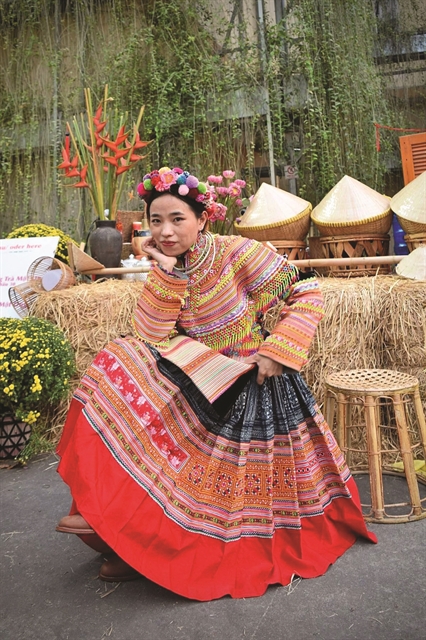 |
| Chấu Thị Nung, a Mông Hoa ethnic, is the stylist of the Mông costumes' fashion project. Photo courtesy of Hnubflower. |
"Each Mông subgroup in Việt Nam can distinguish itself from the others through distinctive patterns and details on their clothes," she said.
"However, when it is time to wear traditional clothes such as at festivals, the majority of the young Mông today purchase their attire elsewhere, dressing incorrectly. So many in the community cannot even differentiate between each other’s subgroups."
'Fashion revival project'
Nung is eager to explain how the majority of young Mông people today have gradually lost the ability to make their own traditional clothing and are reluctant to wear traditional costumes because they see them as something outdated, the preserve of the elderly.
“The primary reason I am carrying out this fashion revival project is for the young to accept traditional dress with a more modern approach,” she said.
“I also want to increase public knowledge of the Mông clothing, remove misconceptions about how the different groups dress, and lay the foundation for more research and fashion projects on our attire.”
Nung and her collaborators have spent time researching documents, drawings and photographs from the past centuries, looking at Mông clothing at home and abroad.
She contacted many ethnic Mông to obtain first-hand knowledge that helped her better understand different Mông subgroups, then gathered some of the most distinctive and authentic Mông outfits from each region throughout the country.
When she could not find a component in an ancient outfit, she invited elderly people from that community to embroider and replicate certain parts of the outfit based on research. The results are stunning.
Besides remaking typical costumes of each group as accurately as possible, Nung also designed and integrated items that reflect the symbolism of the Mông not only in Việt Nam but also around the world, creating an ultra-stylish fashion lookbook.
Complexity of Mông costumes
Over thousands of years, as they dispersed from their original home in China to Southeast Asia including Việt Nam, and subsequently across various other countries, the Mông built an astoundingly rich culture.
Based on colour, characteristics of costumes and phonetics, the Mông are divided into several subgroups, such as the Mông Hoa, White Mông, Green Mông, and Black Mông.
With migration based on the family line, the Mông have developed a complex cultural system, retaining their originality while adopting local cultures. Even within the same subgroup, every region has distinct variations in terms of how people dress. Outfits are also a feature of cultural exchange.
"My own family is multicultural, part Mông Hoa and part Black Mông. I speak the Black Mông's dialect but live in the same area as the Mông Hoa," Nung said.
"I therefore identify and dress like a Mông Hoa while speaking to people from other regions. However, when I speak to locals of my hometown, they immediately recognise me as the Black Mông due to the phonetic differences."
 |
| Costumes of Red Mông in Lai Châu, Mông Leeg in Sa Pa, and Black Mông in Sơn La (from left to right). Photo courtesy of Hnubflower. |
A typical Mông outfit includes black leg warmers, a calf-length skirt, front and back aprons, a wide belt, a jacket, and a headpiece. They also prefer sophisticated silver accessories such as bracelets, necklaces and rings.
Most Mông garments are woven and embroidered with hemp and flax. To make brocade patterns traditionally, the people must grow the plant, then harvest and spin it into yarn. The ingenuity and meticulousness of the Mông are in the way they dye garments with different colours using natural dyes and draw patterns by hand with beeswax.
Exquisite work of art
Each outfit tailored for members within just one family line can take months, even years to finish. Each completed outfit is an exquisite work of art as a result of meticulous attention to detail and much patience.
“Due to their complicated creation, ancient costumes are extremely rare. Only when they run into an unforeseen difficulty will a Mông family sell one to me,” Nung said.
So far, Nung has recreated fashion outfits for the Mông Hoa in Lào Cai, the Mông Leeg in Yên Bái and Sa Pa, the Red Mông in Lai Châu, and the Black Mông in Sơn La.
The intricately patterned skirt and robes of the Mông Hoa costume are hand-made from vintage garments that are roughly 35 years old. The necklaces and bracelets made by the Mông Hoa in Sa Pa are the highlights of the costume, and the Lai Châu-based Mông Hoa's hair braid is used to wrap the hair.
As for the Mông Leeg from Yên Bái, the costume is entirely based on an approximately 100-year-old outfit made of hand-woven hemp linen and handmade patterns.
“Traditional outfits tell us a lot about cultural identity, heritage and the evolution of each ethnicity. The more I discover, the more I realise the complexity and richness of the various Mông subgroups' attire.”
Nung has begun to understand the similarities and differences of the same clothing more thoroughly through the project. For instance, the collar and two bibs on the front and back of the Mông Hoa costume in Bắc Hà, Lào Cai are different from those worn by the majority of the Mông.
The Mông Hoa in Lào Cai wear a cross-shaped collar instead of a V-shaped one like the White Mông and Red Mông.
 |
| A costume that combines elements influenced by various Mông groups around the world. Photo courtesy of Hnubflower. |
To honour the culture of the Mông people all over the world, one outfit from the project fuses elements from a variety of Mông influences, such as a robe from the community in Sa Pa, a front apron inspired by various subgroups, and decorated nails inspired by the White Mông and Green Mông communities in Laos and Thailand. Nung also adds a skirt and silver accessories influenced by the Miao community in China.
Tradition and modernity
After Nung’s project went viral, the Mông from all around the world began to deeply appreciate her project.
“I'm happy you recreated our costume. Your model is also stunning,” a Mông woman from Colorado in the United States, told Nung.
The designer is proud that her project has had such an impact and been so far-reaching.
“A Mông girl in the United States even bought a robe from my collection to wear at her graduation ceremony to honour her ancestors,” Nung said.
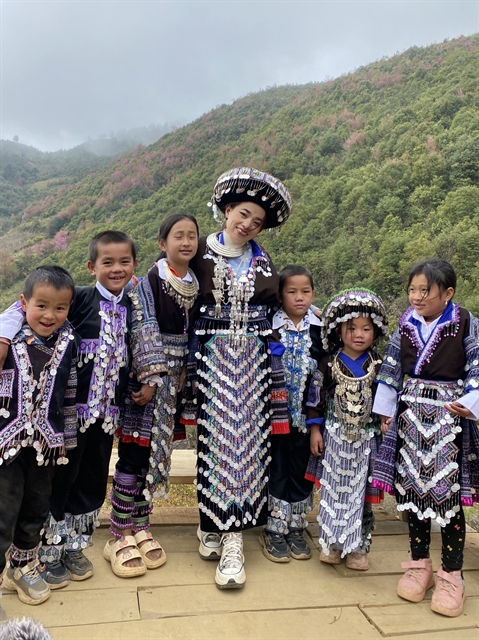 |
| Innovative costumes of Mông Leeg people in Yên Bái. Photo courtesy of Hnubflower. |
Nung now wants to devote all her energy to Mông ancient costumes. Besides continuing to carry out her series of fashion projects, she plans to incorporate her culture into everyday life, be it through recycling costumes, or integrating traditional textiles with contemporary clothing.
Reconciling traditional values with modern lifestyles is a particularly challenging task, but an important one given the historical and social complexity of cultural interchange and transformation. But it is a challenge that Nung is rising to. It seems the journey of this talented young woman has only just begun. — VNS


